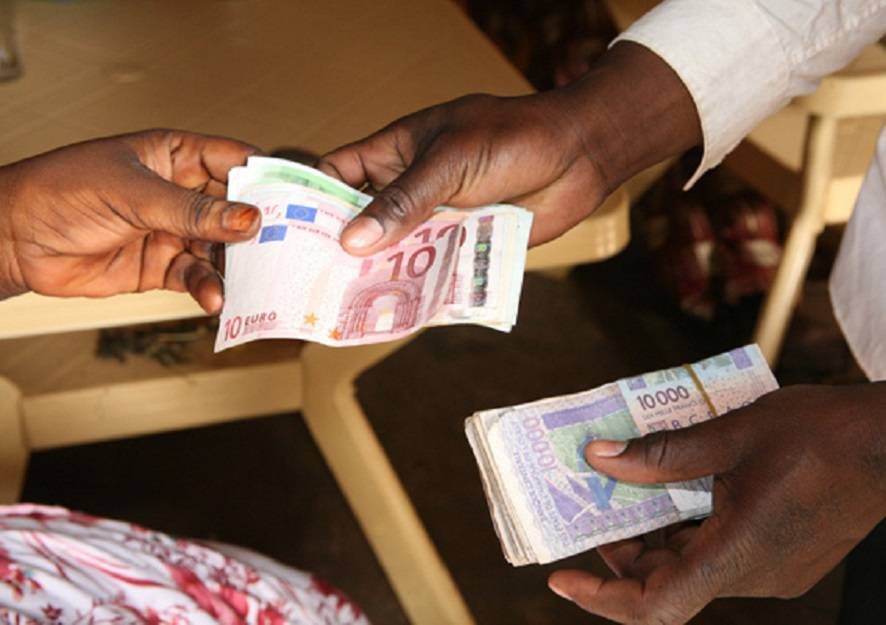Following the World Health Organization (WHO) declaration of coronavirus as a pandemic in March, and nations began instituting restriction measures to contain the spread of the contagion, the World Bank predicted a 23.1% drop in remittances to Africa in 2020.
The bank said as migrants in wealthier nations across Europe, North America, Asia and the Middle East lose jobs or take pay cuts as a result of the pandemic, their ability to send money home would be strained. All major remittance-receiving countries were expected to see a decline of remittances, the bank said.
However, it appears the effect of the coronavirus pandemic on money sent by African migrant workers to their country of birth may not be as bad as earlier predicted by the bank. In revised estimates, the World Bank is projecting that remittances to Africa will fall by 9% in 2020 and 6% in 2021. That is, remittances sent to Africa will fall to $44 billion this year from 48 billion in 2019.
Globally, it is predicting that remittance flows to low and middle-income countries (LMICs), many of who are in Africa, will fall by 7%, to $508 billion in 2020, followed by a further decline of 7.5%, to $470 billion in 2021.
The importance of remittances to developing countries, including nations in Africa, cannot be overemphasized despite projections that it will decline. I’m Ghana, foreign exchange from remittances, for instance, helps to reduce the country’s current account deficit. Also, remittances are invested in industries like housing and consumed in recurrent expenditure.
Meanwhile, in Nigeria, remittances are used to support community development such as school projects, construction of boreholes and hospitals. A study of remittances in Botswana found that remittances enabled rural people to preserve crisis-sensitive assets, such as livestock, and thereby helped them to adopt riskier livelihood strategies that may be more lucrative.
In 2019, remittance flow to Africa was $548 billion, exceeding the amount the continent realized by way of foreign direct investment. Also, remittance flows exceeded development assistance or aid Africa states received from wealthy countries or aid agencies , which was about $166 billion.
According to the World Bank, the gap between remittance flows and FDI is expected to widen as FDI is expected to decline further due to the pandemic. It said the leading factors driving the decline in remittances include weak economic growth and employment levels in migrant-hosting countries, weak oil prices; and depreciation of the currencies of remittance-source countries against the US dollar, the World Bank said.
“The impact of COVID-19 is pervasive when viewed through a migration lens as it affects migrants and their families who rely on remittances,” said Mamta Murthi, Vice President for Human Development and Chair of the Migration Steering Group of the World Bank. “The World Bank will continue working with partners and countries to keep the remittance lifeline flowing, and to help sustain human capital development.”
The report also highlighted an interesting dynamics in international migration flow. For the first time in recent history, the stock of international migrants is likely to decline as net migration has slowed and return migration has increased. For instance, in June, hundreds of Ghanaians returned home from the United Arab Emirates due to financial difficulties fueled by the coronavirus pandemic.
It also said rising unemployment in the face of stiffer visa restrictions on migrants and refugees is likely to result in a further increase in return migration. “Beyond humanitarian considerations, there is a strong case to support migrants who work with host communities on the frontline in hospitals, labs, farms, and factories,” said Michal Rutkowski, Global Director of the Social Protection and Jobs Global Practice at the World Bank.
“Supportive policy responses by host countries should include migrants, while origin or transit countries should consider measures to support migrants returning home.
According to the World Bank, the increase in return migration is likely to prove burdensome for the communities that the migrants return to, as they must provide quarantine facilities in the immediate term and support housing, jobs, and reintegration efforts in the medium term.

